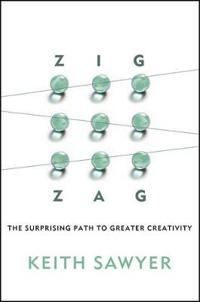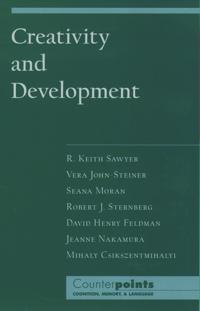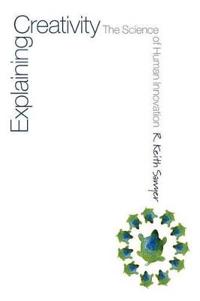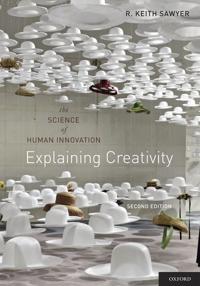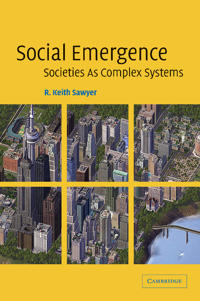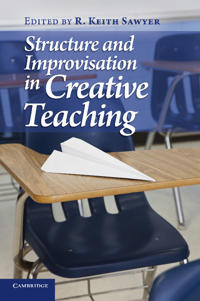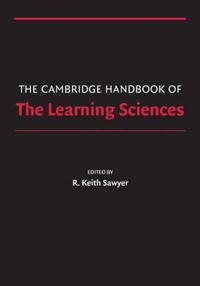Zig Zag: The Surprising Path to Greater Creativity (Inbunden)
avKeith Sawyer, R. Keith Sawyer
ISBN: 9781118297704 - UTGIVEN: 201303A science-backed method to maximize creative potential in any sphere of lifeWith the prevalence of computer technology and outsourcing, new jobs and fulfilling lives will rely heavily on creativity and innovation. Keith Sawyer draws from his expansive research of the creative journey, exceptional cr[...]
Creativity and Development (Häftad)
avR. Keith Sawyer, Vera John-Steiner, Seana Moran
ISBN: 9780195149005 - UTGIVEN: 200308What is creativity, and where does it come from? Creativity and Development explores the fascinating connections and tensions between creativity research and developmental psychology, two fields that have largely progressed independently of each other-until now. In this book, scholars influential in[...]
Explaining Creativity (Häftad)
avR. Keith Sawyer
ISBN: 9780195304459 - UTGIVEN: 2006-02Explaining Creativity is an accessible introduction to the latest scientific research on creativity. In the last 50 years, psychologists, anthropologists, and sociologists have increasingly studied creativity, and we now know more about creativity than at any point in history. It considers not only [...]
Explaining Creativity (Häftad)
avR. Keith Sawyer
ISBN: 9780199737574 - UTGIVEN: 201203Explaining Creativity is an accessible introduction to the latest scientific research on creativity. The book summarizes and integrates a broad range of research in psychology and related scientific fields. In the last 40 years, psychologists, anthropologists, and sociologists have devoted increased[...]
Social Emergence (Pocket)
avR. Keith Sawyer
ISBN: 9780521606370 - UTGIVEN: 200511Can we understand important social issues by studying individual personalities and decisions? Or are societies somehow more than the people in them? Sociologists have long believed that psychology can't explain what happens when people work together in complex modern societies. In contrast, most psy[...]
Structure and Improvisation in Creative Teaching (Pocket)
avR. Keith Sawyer
ISBN: 9780521746328 - UTGIVEN: 201106With an increasing emphasis on creativity and innovation in the twenty-first century, teachers need to be creative professionals just as students must learn to be creative. And yet, schools are institutions with many important structures and guidelines that teachers must follow. Effective creative t[...]
Pretend Play As Improvisation (Inbunden)
avR. Keith Sawyer
ISBN: 9780805821192 - UTGIVEN: 1997-02-12Examines preschoolers' pretend play in the context of a theory of improvisational performance genres. The text argues that the social skills gained from improvisation are linked to the child's developing ability to improvise with other creative performers.[...]
Group Creativity (Pocket)
avR. Keith Sawyer
ISBN: 9780805844368 - UTGIVEN: 2003-05-13In all groups, creativity and collaboration are essential. And perhaps the most creative collaborating groups are music and theatre ensembles. This title draws on studies of performing ensembles to provide insights into all group creativity.[...]
The Cambridge Handbook of the Learning Sciences (Pocket)
avR. Keith (EDT) Sawyer
ISBN: 9780521607773 - UTGIVEN: 2006-04Learning sciences is an interdisciplinary field that studies teaching and learning. The sciences of learning include cognitive science, educational psychology, computer science, anthropology, sociology, neuroscience, and other fields. The Cambridge Handbook of the Learning Sciences, first published [...]
The Cambridge Handbook of the Learning Sciences (Inbunden)
avR. Keith (EDT) Sawyer
ISBN: 9781107033252 - UTGIVEN: 2014-11The interdisciplinary field of the learning sciences encompasses educational psychology, cognitive science, computer science, and anthropology, among other disciplines. The Cambridge Handbook of the Learning Sciences is the definitive introduction to this innovative approach to teaching, learning, a[...]
The Cambridge Handbook of the Learning Sciences (Pocket)
avR. Keith (EDT) Sawyer
ISBN: 9781107626577 - UTGIVEN: 2014-11The interdisciplinary field of the learning sciences encompasses educational psychology, cognitive science, computer science, and anthropology, among other disciplines. The Cambridge Handbook of the Learning Sciences, first published in 2006, is the definitive introduction to this innovative approac[...]

